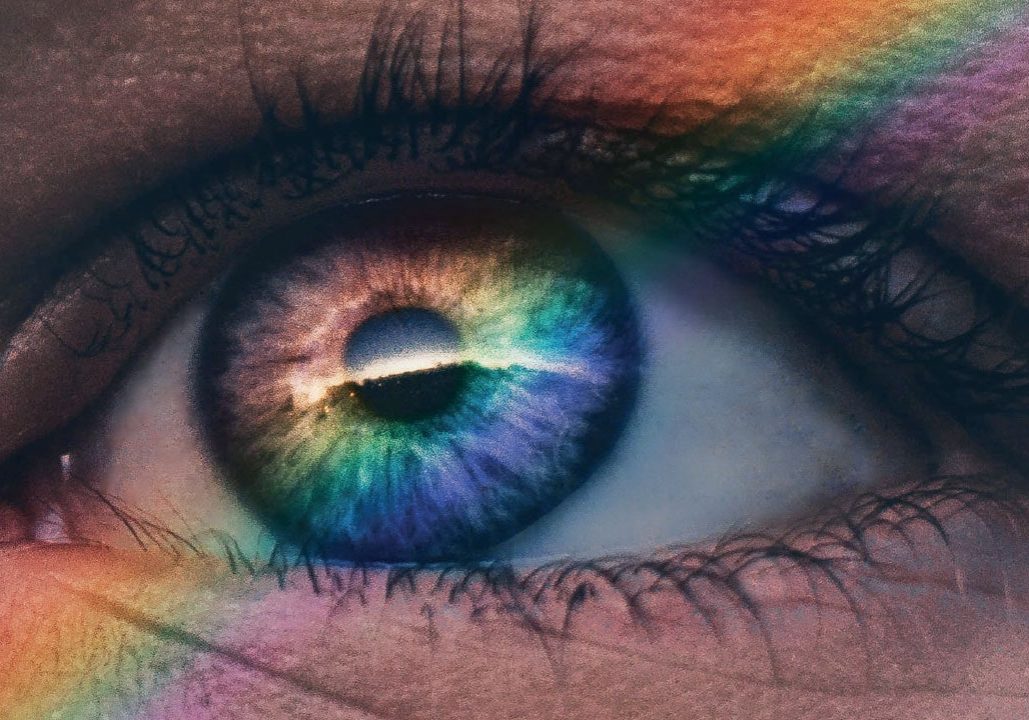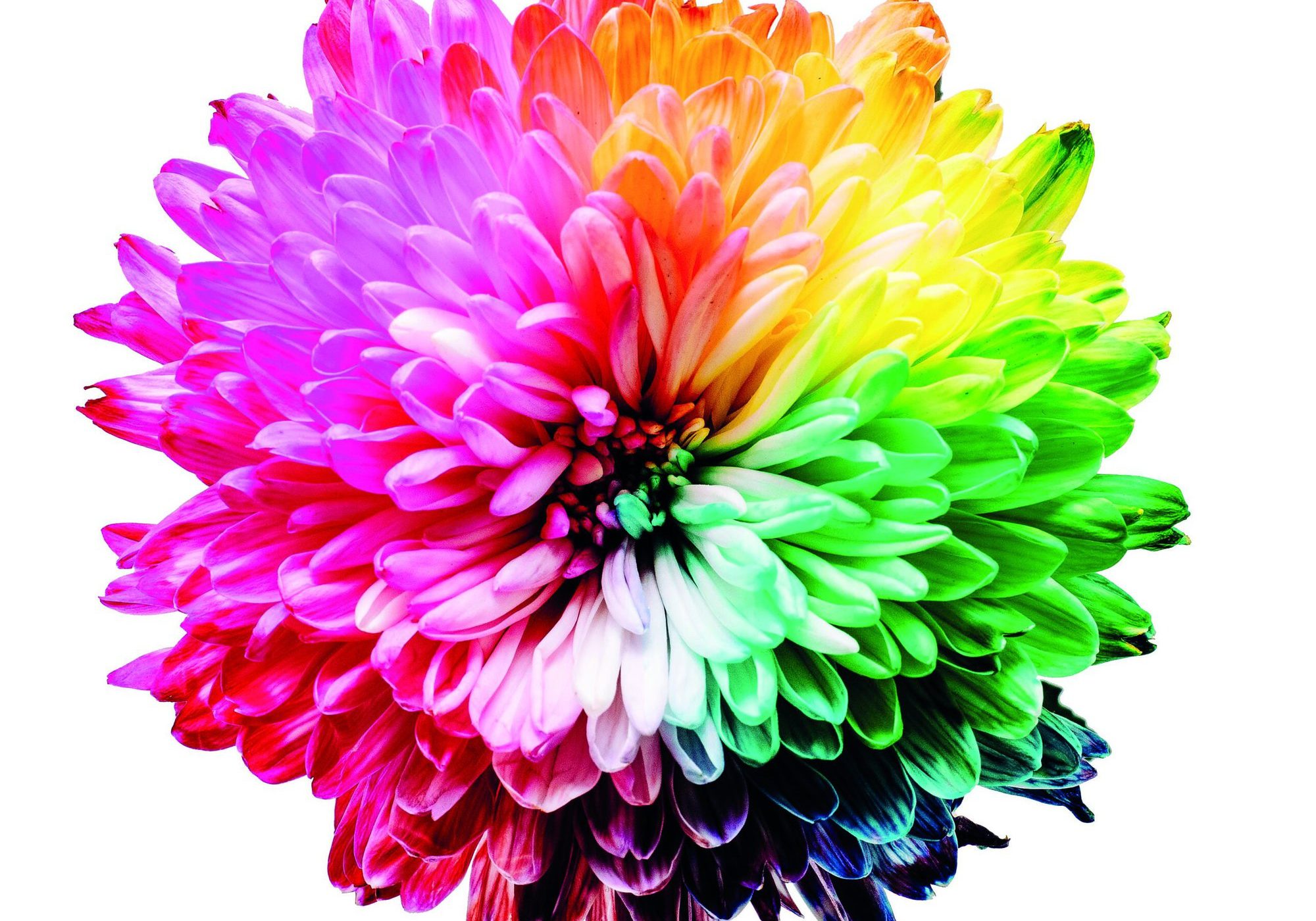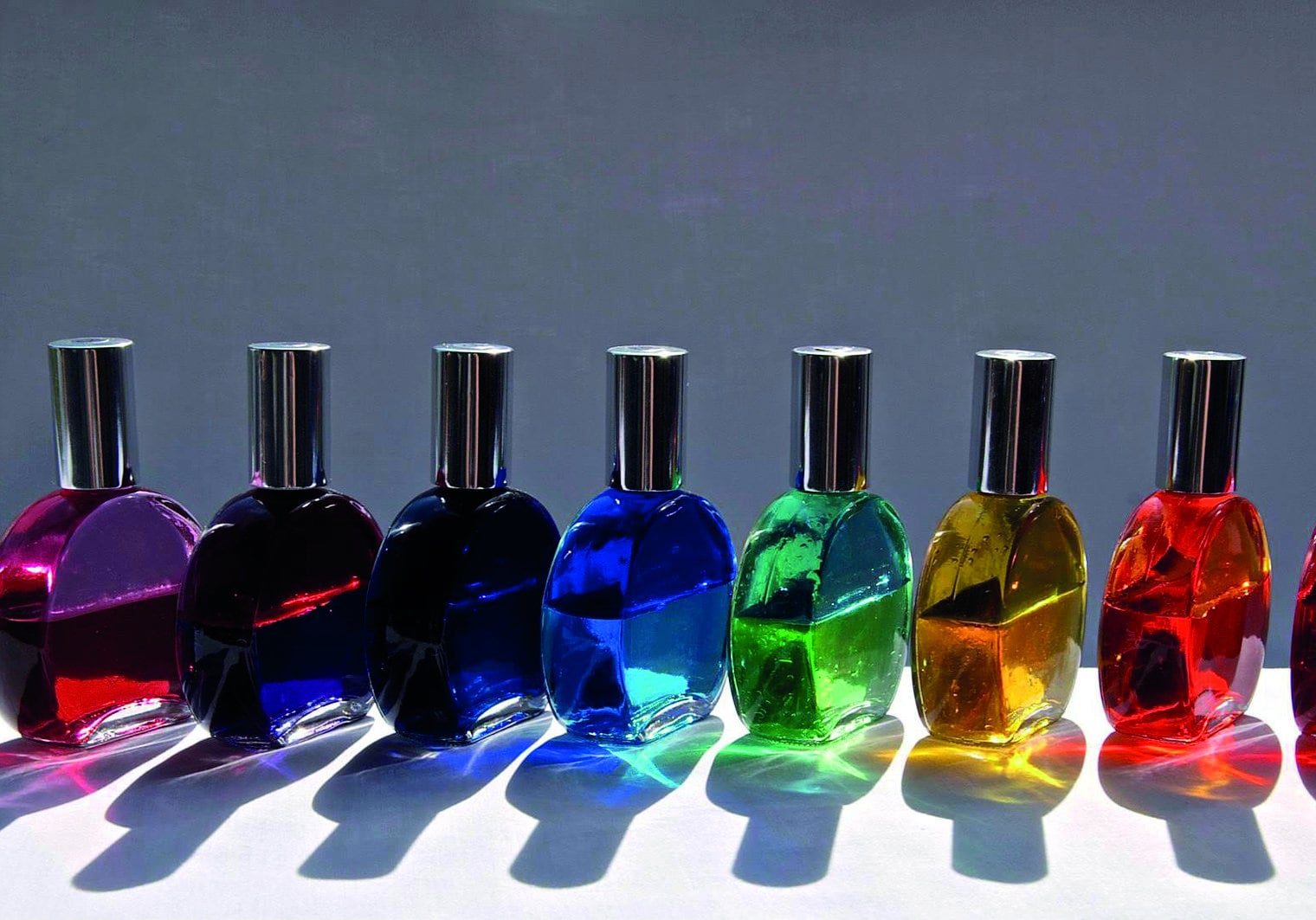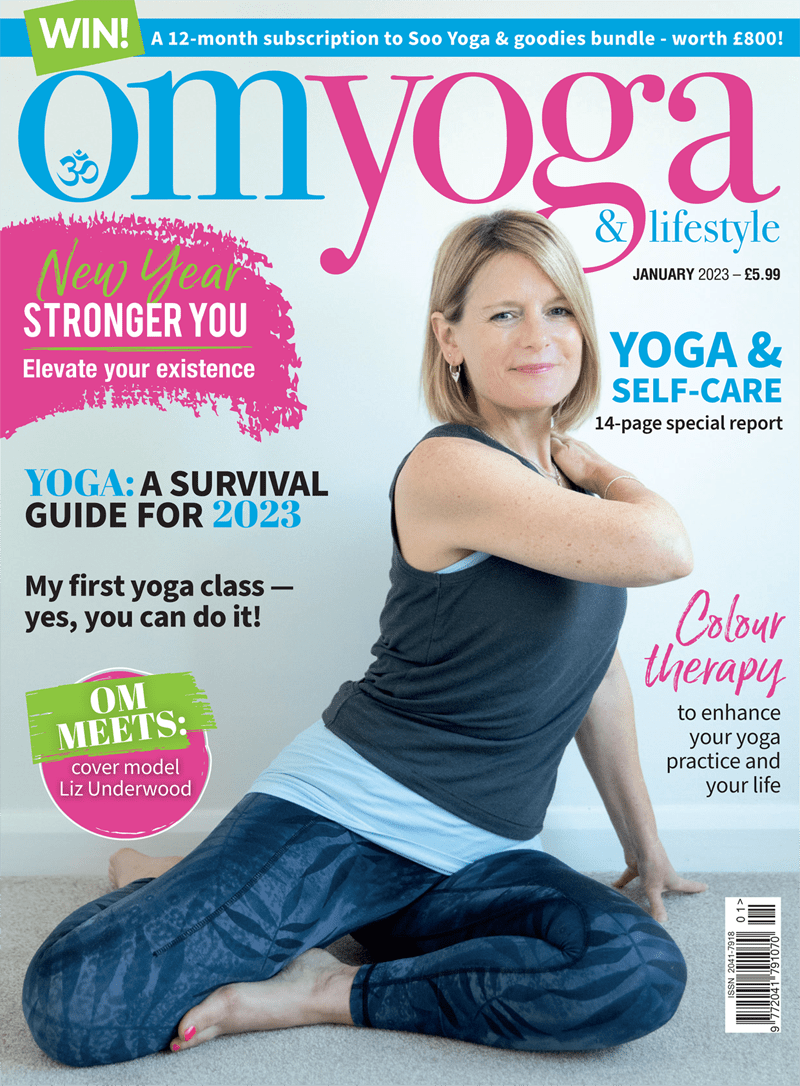
Colour therapy
How colour can enhance your yoga practice and your life. By Emma-Louise Hooper
The science behind colour
Although we see colour, the ‘colour’ of an object is determined by the wavelengths of light that it reflects. Newton mapped out the visible spectrum of light through his experiments with passing light through a prism circle and organised his findings in the colour wheel ROYGBIV (red, orange, yellow, green, blue, indigo, violet). These represent just a fraction of the electromagnetic spectrum that we can see with our naked eye.
Simply put, colour is energy vibrating at different speeds. Lower vibrations produce warmer colours on the spectrum, for example, our reds, oranges and yellows, while the higher vibrations we associate with cooler colours such as green, blue, indigo and violet.
Colour therapy
The use of colour as a therapy (chromotherapy), dates back to 500 BC and has long been acknowledged for its effect on the physical, emotional and spiritual body.
Colour is one of the first things we learn as a child and is a powerful tool we can use to influence our emotions, be that to induce a state of calm, soothing and quietening our mind, or to uplift, empower and excite.
Colour is also gaining recognition in treating illness and disease. We see applications in the use of light boxes to treat SAD (seasonal affective disorder) and other depressive illnesses; in school settings to aid children with learning difficulties; and in hospital settings to aid recovery from surgery.
The chakra connection
Each colour of the light spectrum that we can see resonates with the seven main energy centres in the human body, often referred to in Indian ayurveda as our chakra system. Integrating colour as part of our yoga practice can help to restore balance, remove blockages and align the flow of energy within the human body.
Let’s explore each colour in more detail below:


Red - Root (Muladhara)
Red is a very physical and vibrant colour linked to strong emotions such as love, passion, desire and survival instinct. It is the colour of confidence, strength, power and enthusiasm and can help to promote a feeling of groundedness, strengthening our connection to earth, energising and stimulating our senses. It’s also the colour associated with danger and mental alertness; the striking red of traffic lights and ‘stop’ signs. It can indicate a degree of impulsiveness, aggression, anxiety and fear.
Orange - Sacral (Swadhisthana)
Orange symbolises the combined energy of red alongside the happiness of yellow. On an emotional level, orange represents the colour of sexuality and desire, optimism, self-confidence, flamboyance and adventure, vitality, self control, encouragement and stimulation. When imbalanced, orange can present as emotional instability, self-indulgence, insincerity, confusion and repressed emotions.
Yellow - Solar Plexus (Manipura)
The brightest colour of the spectrum, yellow is a colour often associated with warmth, optimism and joy. Studies also show links to the brain and the feel-good hormone, serotonin. The colour yellow is believed to increase our mental activity, heighten our awareness, intellect and logic. It is the colour of our personal power, courage, self-esteem and ego, but when imbalanced may present as neediness, impulsiveness, rigidity and irritability.
Green - Heart (Anahata)
Green represents the colour of nature, symbolising purity, harmony, love, compassion, health, vitality, calmness and tranquillity. It’s often thought to promote optimism and balance, enhancing cognition and memory recall. When imbalanced, it can present as stubbornness, envy, selfishness, possessiveness, greed, impatience, defensiveness and lack of trust.
Blue - Throat (Vishuddha)
Blue is associated with calmness, serenity, imagination and creativity and often the colour of trust, reliability, loyalty and sincerity. Located at the throat centre, blue is deemed to be the seat of our communication, our interaction with others and our self-talk. Blue may be used to help support introversion, over[1]thinking, sensitivity, a lack of spontaneity or sense of adventure, anger, hostility and resentment.
Indigo/Purple - Third Eye (Anja)
Purple is widely used as the symbol of luxury and power, stability and wisdom. It is also the colour of grace, mysticism, magic and connection to our intuition and psychic abilities. It can be both uplifting and inspiring but also represent sadness and frustration.
Violet - Crown (Sahasrara)
The colour violet represents purity and wholeness, enlightenment and our spiritual connection. It’s the colour of new beginnings, perfection, integrity and idealism. Imbalances with this energy centre may symbolise over exposure to violet or blockages that reflect as coldness, emptiness, indecision, mental confusion and lack of clarity.
7 ways to harness colour in everyday life
Imagine colour therapy as a type of energy medicine, raising our vibration. Taking time to engage with colour and raising awareness to how we use colour in our daily life can have a positive, healing effect.
- Lighting & ambience: Be creative and decorate your yoga room with anything that lends itself to colour! Coloured lights, mats, yoga props, crystals, candles, artwork and plants.
- Sound: There are links between different musical tones and shades on the colour spectrum. Tuning forks, singing bowls, chimes, musical instruments and the voice itself can all be used to produce musical notes that are believed to engage the energy of a specific colour and chakra.
- Colour meditations: Use the imagination to capture a colour of the moment and make this the focus of your meditation. A great way to balance, cleanse and amplify the energy of individual chakras.
- Crystals: Each crystal carries its own vibration and energy. Selecting colours appropriate to each chakra and placing them on the relevant chakra point during meditation can help to enhance energy flow around the body.
- Eat the rainbow: Identify food groups by colour and focus on moving across the ROYGBIV spectrum as you work daily with each chakra in turn. Food is another way to allow our bodies to access not only vital nutrients and vitamins but also maintain our life-force energy.
- Wear colour: Experiment with different colours, perhaps some you may not usually wear. See if you can identify with any of the emotional responses to colour listed above; perhaps there is a specific emotion you are looking to support or resolve. White is the colour to wear for protection and minimising the impact of surrounding energies. Great if you are teaching a class or working with clients during a healing session.
- Infrared saunas: Falling outside the visible spectrum, far infrared light can be extremely beneficial as a therapy itself. Aside from relaxation, reported health benefits include boosting the immune system, reduction in pain and muscle tension, supporting detoxification and lowering blood pressure.
Emma-Louise Hooper BA (Hons); PG Cert; Dip. NNT is a Colour Mirrors practitioner and holistic wellness coach providing bespoke retreat packages at her wellness centre ‘The Retreat at Old Lan Farmhouse’ in Pembrokeshire. Connect with her at: emmalouisehooper.com


